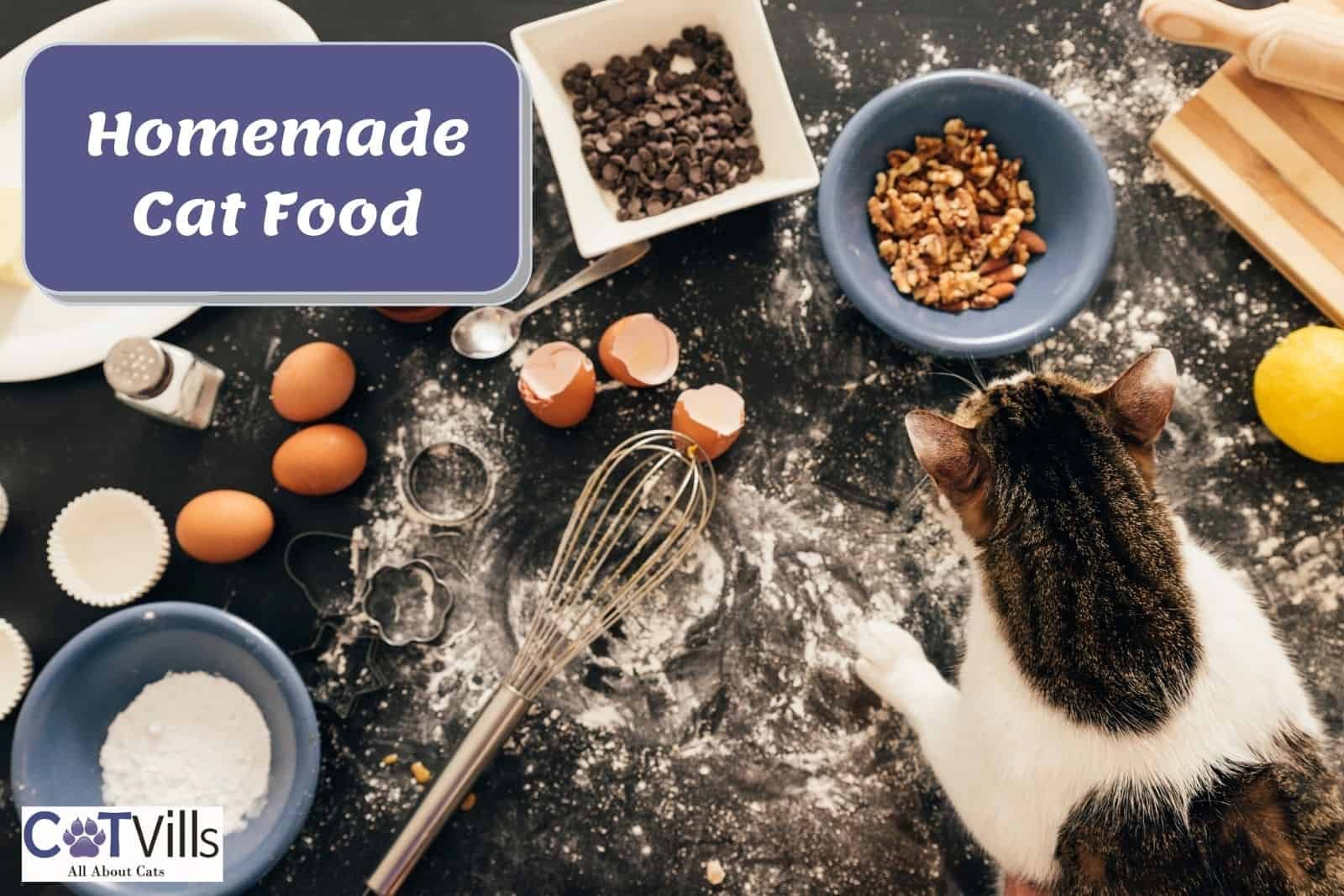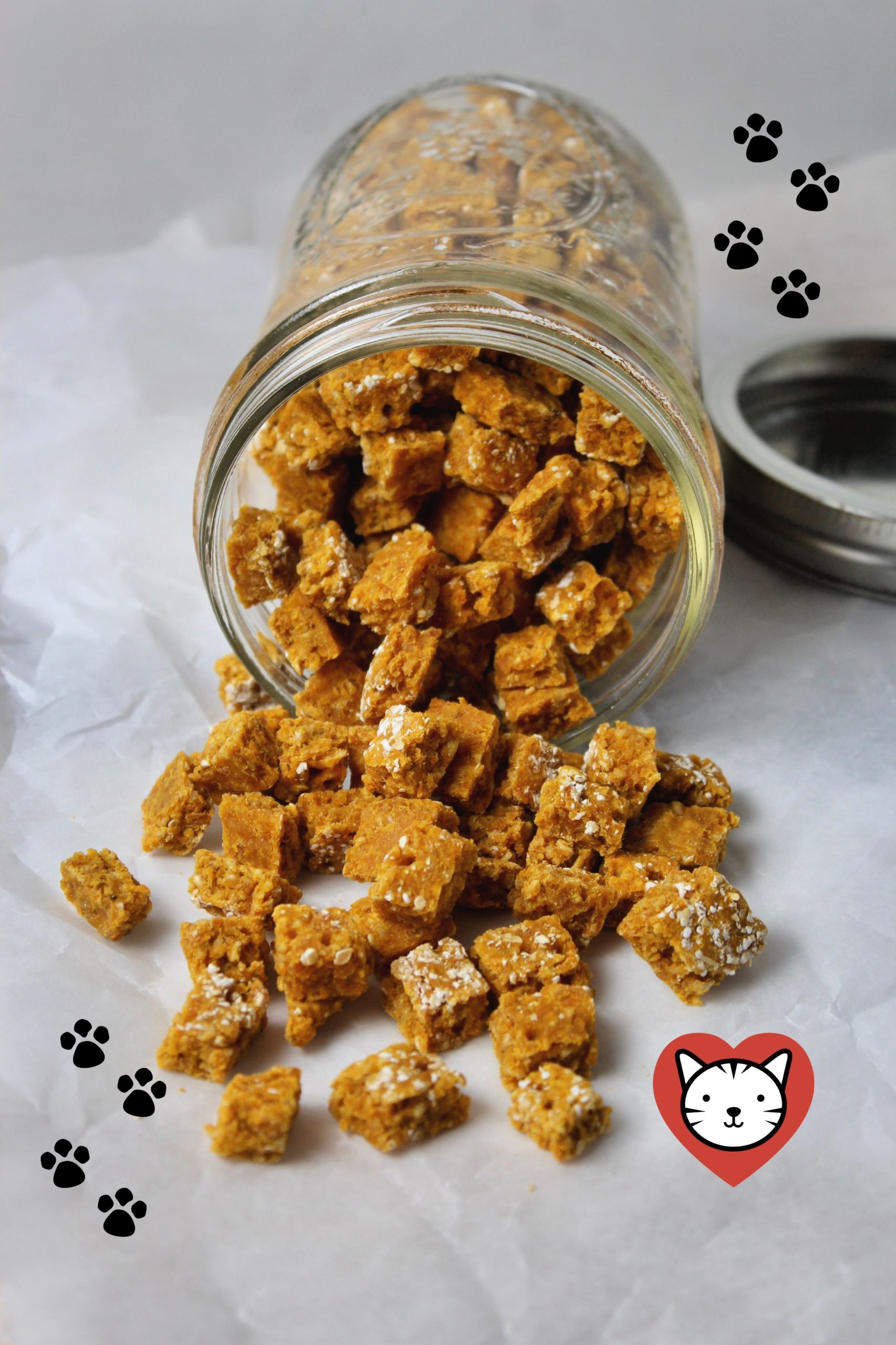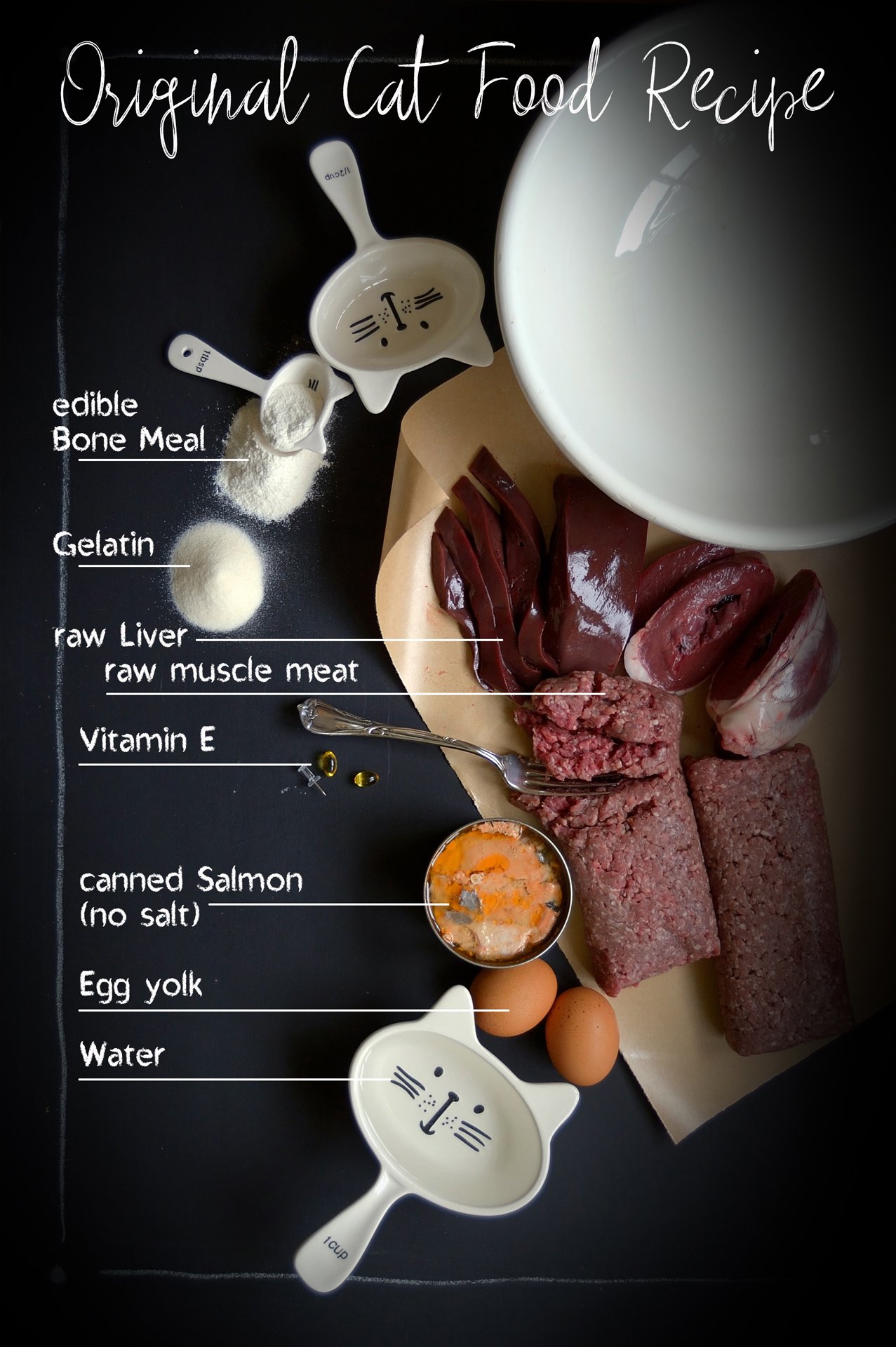Are you looking for the best homemade cat food recipe that will keep your feline healthy and happy? If yes, you’re in the right place. Cats are obligate carnivores, which means that they must eat meat to survive. However, not all cat food is created equal. Some commercial cat foods are filled with ingredients that are harmful to cats, such as grains, fillers, and artificial flavors. On the other hand, my homemade cat food recipe is made with all-natural, healthy ingredients that your cat will love. In this article, I will share my recipe for the best-homemade cat food that you can make right at home. So what are you waiting for? Let’s get started!
Key Takeaways:
- Proper diet is crucial for feline health and well-being.
- Homemade cat food can provide higher quality nutrition than commercial brands.
- Understand feline nutritional requirements (protein, fat, carbohydrates, vitamins, minerals).
- Utilize veterinarian-approved homemade cat food recipes.
- Avoid nutritional deficiencies by considering food balance.
- Homemade cat food may offer benefits such as improved coat health, digestion, and overall well-being.
Best Homemade Cat Food Recipe

Proper nutrition is paramount for our feline companions’ well-being. Instead of relying solely on commercial cat food, why not consider crafting your own best homemade cat food recipe? Here’s a comprehensive guide to get you started:
Nutritional Needs
Cats are obligate carnivores, meaning their bodies are designed to thrive on meat. Their diet should be rich in:
- Protein: Essential for building and repairing tissues
- Taurine: An amino acid crucial for heart and eye health
- Arachidonic acid: An omega-6 fatty acid for skin and coat health
- Vitamins and minerals: For overall health and well-being
Pros and Cons
Pros:
- Controls ingredients and quality
- Tailors to individual cat’s needs
- Potentially more nutritious than commercial food
Cons:
- Time-consuming to prepare
- Requires careful planning to ensure nutritional balance
- May not be suitable for all cats with specific dietary requirements
Steps to Create Your Recipe
- Gather ingredients: Opt for human-grade, high-quality meats like chicken, fish, or turkey. Include organs like liver and heart for added nutrients.
- Cook the meat: Boil, steam, or grill the meat until thoroughly cooked.
- Add supplements: If necessary, add supplements like taurine or arachidonic acid to meet your cat’s specific needs.
- Balance the recipe: Ensure the ratio of protein, carbohydrates, and fats meets your cat’s nutritional requirements.
- Store the food: Keep homemade cat food refrigerated for up to 3 days or frozen for longer storage.
Sample Recipe
Here’s a sample recipe for a best homemade cat food recipe:
| Ingredient | Quantity |
|---|---|
| Chicken breast | 1 pound |
| Chicken liver | 1/4 cup |
| Chicken heart | 1/4 cup |
| Pumpkin puree | 1/4 cup |
| Brown rice | 1/4 cup |
| Taurine supplement | 1/4 teaspoon |
| Arachidonic acid supplement | 1/4 teaspoon |
Tips
- Introduce homemade food gradually to avoid digestive upset.
- Monitor your cat’s weight and health closely.
- Consult with your veterinarian before making any major dietary changes.
By following these guidelines, you can create a best homemade cat food recipe that will nourish your furry friend and promote their overall well-being.
If you’re an ardent car enthusiast, you’d want the best best homemade car wash soap to keep your car sparkling clean.
For pet owners whose furry friends suffer seizures, providing them with the best homemade food for dogs with seizures is a must.
Laundry day can be a breeze with the best homemade liquid laundry soap recipe that’s eco-friendly and easy on the pocket.
Step-by-Step Cooking Techniques for Perfect Meals
Key Takeaways:
- Homemade cat food provides greater control over ingredients, freshness, and avoids additives.
- Formulating homemade recipes requires careful consideration of feline nutritional needs.
- Consulting veterinarians and using approved recipes ensures nutritional adequacy.
- Gradual introduction of homemade food and monitoring cat’s health is essential.
Step 1: Gather Ingredients
Choose high-quality meat and organs (chicken, turkey, fish) that are safe for cats. Include organs like liver and heart for essential nutrients.
Step 2: Cook Meat Thoroughly
Cook the meat thoroughly to kill bacteria and parasites. You can boil, grill, or roast it.
Step 3: Add Supplements
Add supplements as needed, such as taurine and arachidonic acid. These are essential nutrients that may be lacking in homemade recipes.
Step 4: Balance Nutrients
Balance the recipe for protein, carbohydrates, and fats. Cats require a high-protein diet with moderate fats and low carbohydrates.
Step 5: Store Food Appropriately
Store homemade cat food in the refrigerator for up to 3 days or freeze it for longer storage.
Citation:
– 6 Delicious Homemade Cat Food Recipes (Vet Approved)
– 9 Homemade Cat Food Recipes (Vet Approved) – Catster
Dietary Considerations for Individual Cat Needs
Key Takeaways:
- Understand your cat’s specific dietary needs before creating homemade food.
- Consult with a veterinarian to determine any allergies, sensitivities, or health conditions that may require special dietary considerations.
- Consider your cat’s age, activity level, and weight when adjusting portion sizes and nutrient ratios.
Assessing Individual Needs:
- Age: Kittens require more protein and calories than adult cats, while senior cats may benefit from softer foods and reduced protein intake.
- Activity level: Active cats burn more calories and may need higher energy diets.
- Weight: Obese cats may need calorie-restricted diets, while underweight cats may require more nutrient-dense food.
Additional Considerations:
- Allergies: Common allergens in cats include dairy, soy, and some grains.
- Sensitivities: Some cats may be sensitive to certain ingredients, such as fish or poultry.
- Health conditions: Certain health conditions, such as kidney disease or diabetes, may require specific dietary modifications.
Customized Recipes:
- Tailor recipes based on your cat’s individual needs. Adjust protein content, fat levels, and supplement with necessary vitamins and minerals.
- Monitor your cat’s weight, appetite, and overall health. Make adjustments to the diet as needed, in consultation with your veterinarian.
Conclusion:
Providing a nutritious and tailored diet is crucial for feline health and happiness. By understanding your cat’s individual dietary requirements, you can create homemade food that meets their specific needs and promotes optimal well-being.
Relevant URL Sources:
- Dietary Considerations for Cats by Catster
- Nutritional Needs of Cats by Cornell University College of Veterinary Medicine
Benefits and Precautions of Homemade Cat Food
Do you love spoiling your feline friend with home-cooked meals? While preparing homemade cat food can be a rewarding experience, it’s important to weigh the benefits and precautions before you embark on this culinary adventure.
What’s the Buzz?
Homemade cat food offers several potential benefits:
- Control over ingredients: You know exactly what goes into your cat’s bowl, reducing the risk of allergies or sensitivities.
- Tailored nutrition: Adjust the recipes to meet your cat’s unique needs and avoid harmful additives.
- Improved health: Properly formulated homemade food can promote a healthier coat, better digestion, and reduced inflammation.
The Flip Side: Potential Concerns
Before whipping up feline feasts, be aware of these potential drawbacks:
- Time-consuming: Homemade food requires prep, cooking, and cleanup, making it a commitment.
- Nutritional balance: Getting the recipe just right is crucial to ensure your cat gets all the necessary vitamins and minerals.
- Bacterial contamination: Raw meat can harbor bacteria, so proper food handling and storage are essential.
Paws for Thought: Key Takeaways
- Control your cat’s diet: Homemade food gives you the power to choose ingredients and avoid allergens.
- Balance is key: Ensure your recipes meet your cat’s nutritional requirements with guidance from a veterinarian.
- Food safety first: Handle and store homemade cat food carefully to prevent bacterial contamination.
Sources:
- 6 Delicious Homemade Cat Food Recipes (Vet Approved)
- The Best Homemade Cat Food for Your Feline: Our Top Recipes
FAQ

Q1: What are the key nutrients that my cat needs in their homemade food?
A1: Essential nutrients include protein, fats, carbohydrates, minerals, and vitamins. Protein is crucial for muscle development, fats provide energy and support vitamin absorption, carbohydrates supply energy, minerals maintain bone health, and vitamins are involved in various metabolic processes.
Q2: How can I ensure that my homemade cat food is balanced and meets my cat’s nutritional needs?
A2: To ensure a balanced homemade diet, consult with a veterinarian or veterinary nutritionist to create a recipe that meets the Association of American Feed Control Officials (AAFCO) guidelines. Carefully consider the proportions and sources of protein, fats, carbohydrates, minerals, and vitamins in your recipe.
Q3: What are the benefits of feeding my cat homemade food?
A3: Homemade cat food offers several benefits, such as cost-effectiveness, greater control over ingredients, reduced risk of allergies and sensitivities, improved digestion, and a healthier skin and coat.
Q4: Are there any risks associated with feeding my cat homemade food?
A4: While homemade cat food can be beneficial, it’s important to be aware of potential risks such as nutritional imbalances, bacterial contamination, and inadequate moisture content. Ensure proper recipe formulation, consult with a veterinarian, and follow food safety guidelines to minimize these risks.
Q5: Where can I find reliable recipes for homemade cat food?
A5: For trustworthy homemade cat food recipes, consult reputable sources such as websites and cookbooks created by veterinarians or veterinary nutritionists, who can provide scientifically sound and nutritionally balanced recipes.
– The Best Homemade Cat Food Recipe: A Guide to Feline Nutrition
Introducing [- The Best Homemade Cat Food Recipe: A Guide to Feline Nutrition], a comprehensive resource that delves into the intricacies of homemade cat food. This guide empowers cat owners with the knowledge and practical steps to craft balanced and nutritious meals for their beloved feline companions.
Key Takeaways:
- Homemade cat food can enhance a cat’s overall health and well-being.
- Essential ingredients include high-quality animal protein and bone replacement supplements for raw food diets.
- Homemade cat food recipes include cooked, raw, and semi-cooked options.
- Benefits of homemade cat food include control over ingredients and the absence of artificial additives and preservatives.
Best Homemade Cat Food Recipe
As a feline nutrition expert, I’m thrilled to share my insights on crafting the best homemade cat food recipe for your beloved kitty. Homemade diets provide unparalleled control over ingredients, ensuring your furry friend receives optimal nourishment.
Essential Ingredients for Homemade Cat Food:
- High-quality animal protein: Lean meats, organ meats, and fish are excellent sources of essential amino acids.
- Bone replacement supplements: If feeding raw food, these supplements ensure adequate calcium and phosphorus intake.
Types of Homemade Cat Food Recipes:
1. Cooked Food:
- Simmered or baked meats, fish, and vegetables.
- Pros: Easy to digest and prepare.
- Cons: May lose some nutrients during cooking.
2. Raw Food:
- Uncooked meat, bones, and organs.
- Pros: Highly nutritious and mimics natural feline diets.
- Cons: Requires careful handling and potential for bacterial contamination.
3. Semi-Cooked Food:
- Partially cooked meats and vegetables.
- Pros: Balances the benefits of cooked and raw food.
- Cons: Can be more time-consuming to prepare.
Benefits of Homemade Cat Food:
- Control over ingredients: Avoid fillers, artificial additives, and preservatives.
- Tailored to specific needs: Adjust the recipe based on your cat’s age, health, and preferences.
- Improved health: Whole, unprocessed foods promote digestive health, skin vibrancy, and overall well-being.
Remember, homemade cat food is not a replacement for veterinary care. Always consult with your veterinarian before making any dietary changes.
Sample Recipe:
Ingredients:
- 1 lb lean ground turkey
- 1/2 cup liver (raw or cooked)
- 1/4 cup cooked brown rice
- 1/4 cup pumpkin puree
- 1/4 tsp calcium supplement (for raw food)
Instructions:
- Cook turkey (if using raw) and liver (if using raw or cooked).
- Combine all ingredients in a bowl and mix well.
- Store in an airtight container in the refrigerator for up to 3 days.
Note: This recipe is a general guideline. Adjust portions and ingredients as needed based on your cat’s individual requirements.
Discover the secrets to the cleanest car ever with the best homemade car wash soap.
Transform your dog’s health with the best homemade food for dogs with seizures.
Upgrade your laundry routine with the best homemade liquid laundry soap recipe.
Recipe Formulation: A Step-by-Step Guide to Creating a Balanced Meal
Key Takeaways:
- Homemade cat food offers complete control over ingredients and caters to individual nutritional needs.
- A balanced meal consists of lean protein, fiber-rich carbohydrates, non-starchy vegetables, and satiating fats.
- Consult with a veterinarian to ensure homemade food complements your cat’s overall health.
Step 1: Determine Nutritional Needs
Understanding your cat’s age, weight, activity level, and any health conditions is crucial. These factors influence the nutrient profile of their diet.
Step 2: Choose High-Quality Ingredients
Select lean protein sources like chicken, fish, or turkey. Incorporate fiber-rich carbohydrates such as brown rice, sweet potatoes, or oatmeal. Non-starchy vegetables like carrots, broccoli, and spinach provide essential vitamins and minerals.
Step 3: Balance Protein, Carbohydrates, and Fat
Cats require a high-protein diet (30-50%). Aim for 20-40% carbohydrates and 15-20% fat. The fat content influences satiation and nutrient absorption.
Step 4: Incorporate Vitamins and Minerals
Supplements may be necessary to ensure adequate intake of vitamins, minerals, and taurine (an essential amino acid). Consult with a veterinarian for personalized recommendations.
Step 5: Portion and Store Properly
Determine meal portions based on your cat’s size and caloric needs. Store homemade food in airtight containers in the refrigerator for up to 3 days or freeze for longer storage.
Citation:
- Kelsey and Cooper’s Kitchen:
- Veterinary Secrets:
Fresh Ingredients and Preparation Techniques: Ensuring Optimal Quality and Safety
Fresh ingredients and meticulous preparation techniques are fundamental to safeguarding the quality and safety of homemade cat food. Here are some key considerations:
Sourcing and Ingredient Evaluation
- Partner with reputable suppliers that adhere to stringent quality standards.
- Test ingredients regularly to ensure they meet safety specifications.
- Establish approved ingredient protocols to guarantee the consistent use of high-quality ingredients.
Process Control and Equipment Maintenance
- Implement rigorous protocols to monitor and regulate production processes.
- Regularly service and calibrate equipment to maintain accuracy and prevent contamination.
- Ensure employees are thoroughly trained in quality control procedures.
Product Inspection and Documentation
- Conduct thorough inspections at various production stages to identify and rectify any potential issues.
- Maintain accurate records of quality control activities for traceability and accountability.
Continuous Improvement
- Regularly review and enhance quality control systems to ensure ongoing effectiveness.
- Seek feedback from customers and experts to identify areas for improvement.
Key Takeaways:
- Prioritize fresh, high-quality ingredients from trusted suppliers.
- Implement stringent process controls and equipment maintenance to prevent contamination.
- Conduct thorough product inspections and maintain accurate documentation for traceability.
- Continuously improve quality control systems to ensure optimal food safety.
Sources:
– Best Practices for Food Manufacturing Quality Control
– 7 Principles for Quality Control in Your Food Manufacturing Process
Personalized Nutrition: Tips for Adjusting Recipes to Meet Individual Cat Needs
Every cat is unique, with individual nutritional needs that may change over time. As a cat owner, you want to provide your feline companion with the best possible nutrition to support their health and well-being. This means tailoring homemade cat food recipes to their specific requirements. Here are some tips to help you achieve personalized nutrition for your cat:
Key Takeaways:
- Consider your cat’s age, activity level, and health conditions when adjusting recipes.
- Pay attention to your cat’s individual preferences and allergies.
- Avoid using ingredients that are harmful to cats, such as spices or dairy products.
- Consult with a veterinarian before making significant changes to your cat’s diet.
1. Consider Your Cat’s Age and Activity Level
Kittens have different nutritional needs than adult cats, and senior cats may require a diet that is easier to digest. Active cats need more calories than inactive cats. Adjust the portion size and the calorie content of your recipes accordingly.
2. Address Health Concerns
If your cat has any health conditions, you may need to adjust their diet to meet their specific needs. For example, cats with kidney disease may need a diet that is low in phosphorus and sodium, while cats with diabetes may need a diet that is low in carbohydrates.
3. Pay Attention to Allergies
Some cats may be allergic to certain ingredients, such as chicken or fish. If your cat shows signs of an allergy, such as itching or vomiting, after eating a particular food, eliminate that ingredient from their diet and consult with your veterinarian.
4. Consult with a Veterinarian
Before making significant changes to your cat’s diet, it’s always best to consult with a veterinarian. They can help you assess your cat’s nutritional needs and make sure that your homemade recipes are balanced and complete.
Citations:
- Cat Nutrition: All You Need to Know
- Feeding Your Cat: Homemade Diets
FAQ
Q1: What are the benefits of feeding my cat homemade food?
Q2: What are some important ingredients to include in homemade cat food?
Q3: What are some different types of homemade cat food recipes?
Q4: How can I balance my cat’s homemade food to meet their nutritional needs?
Q5: What tips should I follow when preparing homemade cat food?
- Best Finish for Butcher Block Countertops: Choosing the Right Option - December 30, 2025
- Seal for butcher block: Find the best food-safe finish - December 29, 2025
- Finishes For Butcher Block Counters: Choosing The Right Food-Safe Option - December 28, 2025










